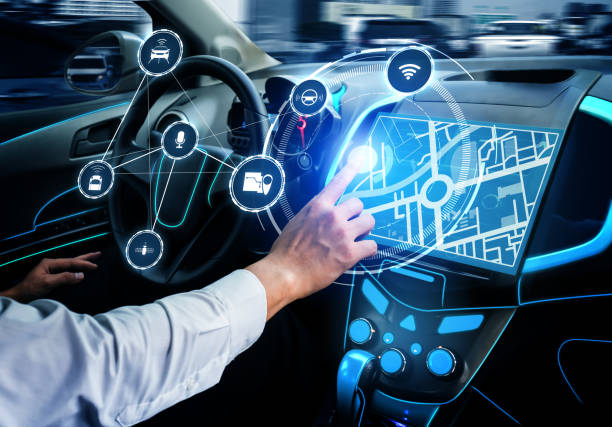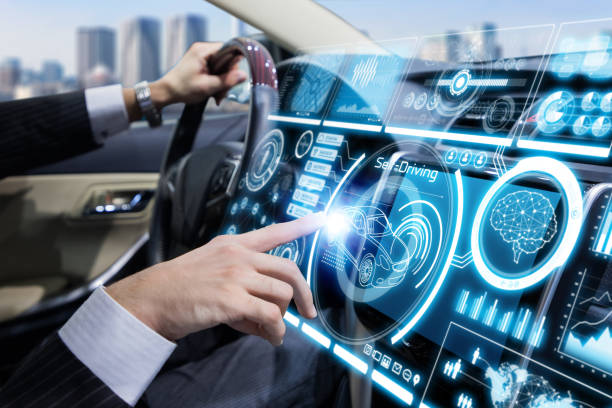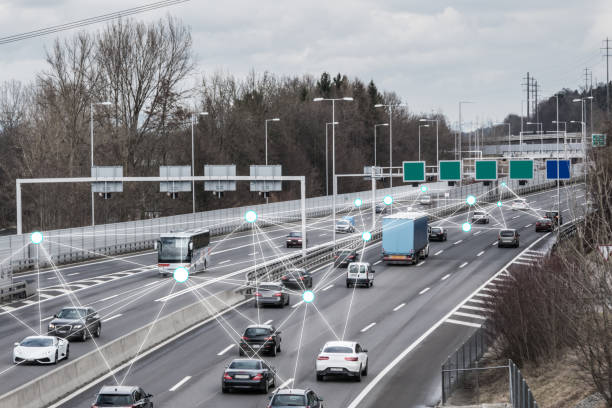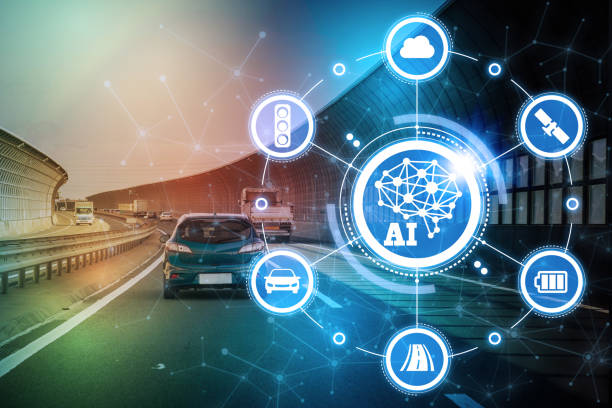Introduction
The integration of autonomous vehicles and biometric sensors represents a significant milestone in the evolution of transportation technology. With the promise of heightened safety, personalized experiences, and seamless interactions, this burgeoning sector is witnessing a surge in research, development, and innovation. However, as companies and researchers strive to develop cutting-edge solutions, the necessity of protecting intellectual property through strategic patenting mechanisms cannot be understated. This article aims to explore the multifaceted realm of patenting innovations in autonomous vehicle biometric sensors, examining the intricacies, challenges, and strategies essential for safeguarding these revolutionary advancements.

The Current Landscape of Autonomous Vehicle Biometric Sensors
The current landscape of autonomous vehicle biometric sensors is marked by a rapid convergence of advanced sensor technologies and autonomous driving systems. These sensors play a pivotal role in enhancing the safety, security, and personalized experience of passengers and drivers.
1. Facial Recognition Technology
Facial recognition systems are being increasingly integrated into autonomous vehicles to authenticate and identify passengers. This technology allows vehicles to customize settings and preferences for individual passengers, ensuring a tailored and user-friendly experience.
2. Fingerprint Scanning Systems
Some autonomous vehicles are equipped with fingerprint-scanning systems that provide an additional layer of security and personalization. These systems can be utilized for driver authentication and access control, adding an extra dimension of safety to the vehicle’s operation.
3. Iris Recognition Technology
Iris recognition is another biometric technology gaining traction in the autonomous vehicle sector. By analyzing the unique patterns in a person’s iris, vehicles can authenticate passengers and drivers, enabling seamless entry and customization of vehicle settings based on individual preferences.
4. Voice Recognition Systems
Voice recognition systems are integral in enabling natural language interactions between passengers and the autonomous vehicle. These systems facilitate hands-free control over various vehicle functions, including navigation, entertainment, and climate control, enhancing the overall user experience and convenience.
5. Physiological Monitoring Sensors
Advanced physiological monitoring sensors, such as heart rate monitors and stress detectors, are being integrated into autonomous vehicles to assess the physical well-being of passengers and drivers. These sensors can detect signs of fatigue or stress, allowing the vehicle to make real-time adjustments to ensure the safety and well-being of occupants.
6. Gesture Recognition Systems
Gesture recognition technology is also making headway in autonomous vehicles, enabling passengers to interact with the vehicle through intuitive gestures. This technology enhances the overall user experience by providing a more natural and seamless mode of communication between the vehicle and its occupants.
7. Multi-Modal Biometric Systems
The integration of multiple biometric sensors into a single, cohesive system is becoming increasingly prevalent. These multi-modal systems leverage the strengths of various biometric technologies to ensure robust authentication and enhanced user personalization, further advancing the capabilities of autonomous vehicles.
The integration of these diverse biometric sensors within the autonomous vehicle ecosystem not only enhances the overall user experience but also contributes to the development of a more secure and efficient transportation environment. As the capabilities of these sensors continue to evolve, the autonomous vehicle industry is expected to witness a significant paradigm shift, with a focus on leveraging biometric data to provide a seamless and personalized mobility experience.

Strategies for Patenting Innovations in Autonomous Vehicle Biometric Sensors
Developing a robust patent strategy for innovations in autonomous vehicle biometric sensors requires a comprehensive approach that considers both the technical intricacies of the technology and the legal complexities associated with intellectual property protection. Here are some strategies that can be adopted to navigate the patenting process effectively:
1. Prior Art Search and Analysis
Conduct a thorough prior art search to identify existing patents and technologies in the field of autonomous vehicle biometric sensors. This analysis will help in understanding the existing landscape, identifying white spaces for innovation, and ensuring that the proposed invention is novel and non-obvious.
2. Collaborative Approach
Foster collaboration between technical experts, legal professionals, and biometric technology specialists. This collaborative approach ensures a comprehensive understanding of the technology and facilitates the drafting of a patent application that encompasses both the technical intricacies and the commercial applications of the innovation.
3. Detailed Patent Drafting
Ensure that the patent application is meticulously detailed, providing a clear and comprehensive description of the autonomous vehicle biometric sensor innovation. The patent should clearly outline the integration of various biometric sensors, the technological advancements, and the specific applications within the autonomous vehicle ecosystem.
4. Legal Expertise and Compliance
Engage legal experts with experience in intellectual property law and technology patents. These professionals can provide valuable insights into the intricacies of patent laws and ensure that the patent application adheres to the legal requirements, including compliance with data privacy regulations and autonomous vehicle industry standards.
5. Regular Patent Portfolio Review
Continuously review and assess the patent portfolio to identify opportunities for portfolio expansion and refinement. Regular portfolio reviews also help in identifying any potential gaps or overlaps in the existing patents, allowing for timely adjustments and enhancements to the patent strategy.
6. Global Patent Filing Strategy
Develop a comprehensive global patent filing strategy to protect the innovation in key markets worldwide. Understanding the nuances of international patent laws and regulations is crucial for securing robust protection in various jurisdictions, thereby safeguarding the intellectual property rights of the innovation on a global scale.
7. Monitoring and Enforcement
Implement a proactive approach to monitor potential patent infringements within the industry. Regular monitoring enables timely detection of any unauthorized use of patented technology, allowing for swift enforcement actions to protect the intellectual property rights associated with the autonomous vehicle biometric sensor innovation.
8. Continuous Innovation and Patent Maintenance
Foster a culture of continuous innovation within the organization, encouraging the development of follow-up technologies and improvements to the existing autonomous vehicle biometric sensor systems. Additionally, maintain the patent portfolio by paying attention to renewal deadlines and ensuring that all necessary maintenance fees are promptly addressed to uphold the validity and enforceability of the patents.
By implementing these strategic approaches, innovators can navigate the complexities of the patenting process for autonomous vehicle biometric sensor innovations, ensuring comprehensive protection of intellectual property rights while fostering a conducive environment for continued technological advancements in the field.

The Role of Intellectual Property Protection in Promoting Innovation
Intellectual property (IP) protection plays a critical role in fostering innovation, particularly in the context of autonomous vehicle biometric sensors. By providing legal mechanisms to safeguard and reward innovative ideas and inventions, IP protection encourages investment in research and development, ultimately driving technological advancements in the field. Here are some key roles that intellectual property protection plays in promoting innovation.
1. Encouraging Investment and R&D
Robust IP protection, including patents, copyrights, and trademarks, provides inventors and companies with the assurance that their efforts will be protected from unauthorized use or exploitation. This assurance encourages investment in R&D, as companies can confidently allocate resources to develop groundbreaking technologies, such as autonomous vehicle biometric sensors, without the fear of immediate imitation or appropriation by competitors.
2. Fostering a Competitive Environment
IP protection fosters a competitive environment where companies are incentivized to continuously innovate and differentiate their offerings. With the assurance of exclusive rights to their inventions, companies are motivated to invest in research, development, and technological advancements to maintain a competitive edge in the market. This healthy competition ultimately benefits consumers by providing a diverse range of innovative and high-quality products and services.
3. Facilitating Knowledge Sharing and Collaboration
While intellectual property protection grants exclusive rights to inventors, it also encourages knowledge sharing and collaboration within the industry. Through licensing agreements and partnerships, companies can share technology, fostering innovation through the exchange of ideas and expertise. This collaborative approach can accelerate the pace of technological advancements in autonomous vehicle biometric sensors, leading to more sophisticated and reliable systems.
4. Enhancing Marketability and Valuation
A strong portfolio of intellectual property, including patents for innovative autonomous vehicle biometric sensors, enhances the marketability and valuation of a company. Investors and stakeholders perceive a robust IP portfolio as a sign of a company’s commitment to innovation and technological leadership, making it an attractive prospect for investment and strategic partnerships. This, in turn, provides companies with the necessary resources to further invest in R&D and drive innovation in the field.
5. Safeguarding Against Infringement
Intellectual property protection acts as a deterrent against unauthorized use or infringement of innovative technologies. Patents, in particular, provide legal recourse for companies to protect their autonomous vehicle biometric sensor innovations from unauthorized replication or commercial exploitation by competitors. This protection not only preserves the commercial viability of the technology but also safeguards the substantial investments made in research, development, and commercialization.
6. Promoting Continuous Innovation
By granting exclusive rights for a limited period, intellectual property protection encourages companies to continuously innovate and improve upon existing technologies. The prospect of exclusive rights upon successful innovation incentivizes companies to invest in research that leads to iterative improvements and new iterations of autonomous vehicle biometric sensors, ultimately driving technological progress and advancing the capabilities of these systems.
In summary, robust intellectual property protection serves as a catalyst for innovation in the field of autonomous vehicle biometric sensors by encouraging investment, fostering a competitive environment, facilitating knowledge sharing, enhancing marketability, safeguarding against infringement, and promoting continuous technological advancements. By incentivizing and rewarding innovation, IP protection plays a vital role in driving progress and ensuring the long-term sustainability of the autonomous vehicle industry.

Ethical Considerations and Future Implications
The integration of autonomous vehicle biometric sensors raises significant ethical considerations and necessitates a careful examination of the potential societal impacts and future implications. It is imperative to address these ethical concerns to ensure responsible development and deployment of these technologies. Here are some critical ethical considerations and their potential future implications:
1. Data Privacy and Security
The collection and storage of biometric data raise concerns regarding privacy and security. Ensuring robust data encryption, implementing stringent access controls, and obtaining explicit user consent for data collection are essential to protect the privacy and security of individuals’ biometric information. Failure to address these concerns may lead to breaches, unauthorized access, and misuse of sensitive personal data, potentially resulting in identity theft or unauthorized surveillance.
2. Informed Consent and User Autonomy
Autonomous vehicles equipped with biometric sensors must prioritize user autonomy and informed consent. Users should have the right to control the collection and use of their biometric data, including the option to opt in or out of data collection processes. Respecting user autonomy fosters trust and transparency, ensuring that individuals have control over how their personal information is utilized within the autonomous vehicle ecosystem.
3. Algorithmic Bias and Fairness
Developers must address algorithmic biases that may arise from the use of biometric data in autonomous vehicles. Biased algorithms can lead to discriminatory outcomes, affecting access to services, resources, or opportunities based on factors such as race, gender, or socioeconomic status. It is crucial to implement robust testing protocols and ethical guidelines to mitigate biases and ensure the fair and equitable treatment of all individuals using autonomous vehicles.
4. Cybersecurity Risks and Vulnerabilities
Autonomous vehicles are susceptible to cybersecurity threats, including hacking, data breaches, and unauthorized access to critical systems. Integrating robust cybersecurity measures, including intrusion detection systems, secure communication protocols, and regular software updates, is vital to protect autonomous vehicles from malicious attacks that may compromise passenger safety and privacy.
5. Regulatory Compliance and Legal Frameworks
Adherence to existing regulatory frameworks and the development of new laws and policies tailored to the unique challenges of autonomous vehicles and biometric data are essential. Clear guidelines governing data handling, consent requirements, and liability attribution are necessary to ensure ethical and legal compliance, thereby fostering public trust and confidence in the responsible deployment of autonomous vehicles with biometric sensors.
6. Social Impact and Accessibility
Addressing the social impact of autonomous vehicles equipped with biometric sensors is crucial. Ensuring equitable access to this technology, considering the needs of individuals with disabilities, and addressing potential socioeconomic disparities are essential to promote inclusivity and prevent the exacerbation of existing societal inequalities.
7. Long-Term Implications for Transportation and Society
As autonomous vehicles with biometric sensors become more prevalent, they are likely to transform the transportation landscape and reshape societal norms. Anticipating the long-term implications, such as changes in urban planning, employment patterns, and human interactions, is critical for policymakers and industry stakeholders to proactively address challenges and leverage opportunities for sustainable and equitable development.
Addressing these ethical considerations and anticipating future implications is pivotal to ensure the responsible integration of autonomous vehicle biometric sensors into society. By prioritizing data privacy, user autonomy, fairness, cybersecurity, regulatory compliance, social impact, and long-term implications, stakeholders can promote the ethical and sustainable advancement of autonomous vehicle technology, fostering a future where innovation is harmoniously aligned with societal well-being and ethical standards.
Conclusion
The dynamic intersection of autonomous vehicles and biometric sensor technology represents a pivotal moment in the evolution of transportation and personalized mobility. While the challenges associated with patenting innovations in this domain are multifaceted, strategic approaches coupled with a comprehensive understanding of the technology, legal frameworks, and ethical considerations can facilitate the successful protection of intellectual property. By fostering a conducive environment for innovation, bolstering market competitiveness, and upholding ethical standards, the patenting of autonomous vehicle biometric sensor technologies stands to not only revolutionize the transportation sector but also underscore the importance of responsible and innovative technological advancements.

